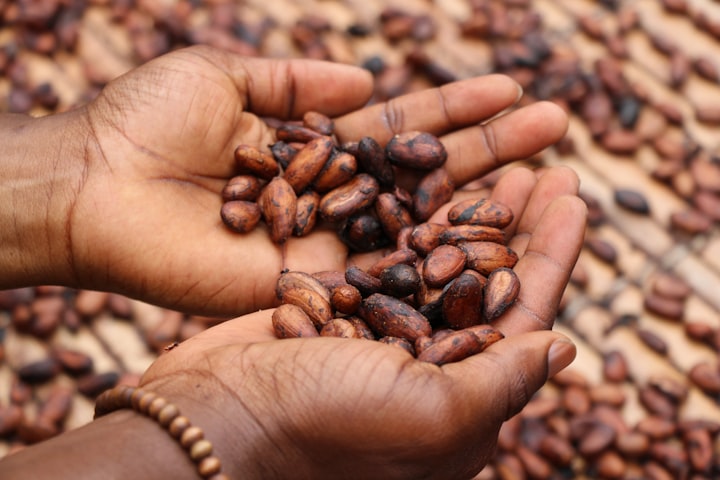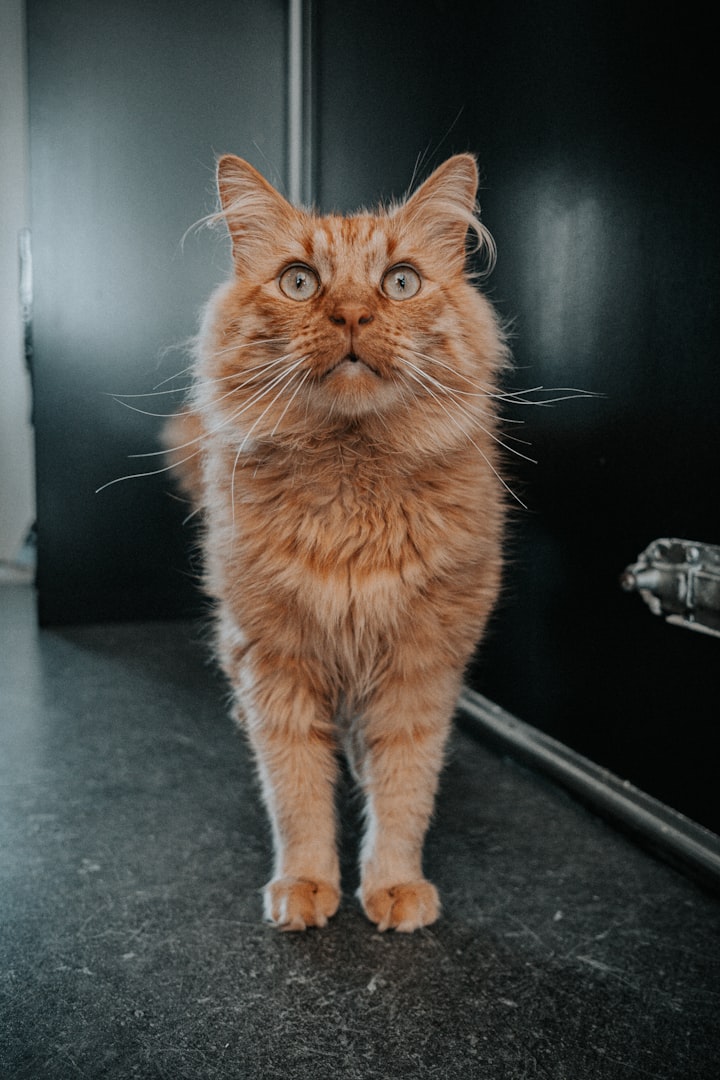How Chocolate Kills
Three people worlds apart connected by sweet death

Seydou rolled over on his mat and stretched; his back hurt. It always hurt, and it was hard to get comfortable on the dirt floor. Not that he knew any different; he had always slept on a mat on the ground.
“Up, up!” came the call from the farmer, banging the side of a pot of mush. Weary and aching, Seydou stumbled up and toward breakfast with the rest of the boys who shared his sleeping hut and those next to it. Breakfast was usually mush and mango, if they were lucky. They ate it with their fingers. Seydou ate with one hand while he scratched with the other. His one set of clothes was stained and stiff in places with sweat and dirt and they itched. He hoped to go swimming in the pond tonight.
Still rubbing sleep from his eyes, Seydou listened to the brief instructions for the morning. Clearing more brush, like yesterday. Rusty machetes were passed out to his group, and after swallowing some water from a plastic jug passed around, all the boys trouped out the fields.
It didn’t actually look like a field as much as a mildly cultivated jungle. The boys spread out and started hacking, swinging machete blades in rhythm. They were clearing out competition plants that would choke out the most important plant of all, the one that the farmer was hiring them care for: cacao trees.
Mid-morning, the farmer called for break and brought out another plastic jug of water and poured cups of it for each of the boys. It poured in a light green-brown stream, scooped from the pond like all of their water. Seydou slapped a little on his bug bites and held out his cup for more.
The farmer then called two of the bigger boys over. He helped them hoist sprayers on their backs, and then, bare-foot and bare-faced, they started spraying the brush. Seydou didn’t know what it was for—to kills plants to help them grow—but made him wrinkle his nose when he caught a whiff and remembered the mild burning when it had once gotten on his dark skin.
It was sometime during the late-morning monotonous music of the sprayers and the machetes that he saw the tall man standing on the edge of the grove. He was tall, his skin was a deep ombre, and his clothes were noticeably clean, though he was sweating. He looked comfortable in the grove, but what Seydou noticed most was the camera bag. The man nodded at Seydou and the rest of the boys, and then turned away to take pictures of the cacao trees, the green pods, and oddly, the sprayer.
The farmer kept an eye on the stranger, but the ground and groves were open; he couldn’t force him to leave. The stranger stopped for a drink from a water bottle in his side bag. Seydou could see that the water was clear. The man wandered closer to the boys and leaned against a tree. Then he started to talk. He asked them their names, told them jokes, and occasionally wrote something down. It wasn’t until he asked Seydou how old he was that the feeling changed a little. All the boys looked nervous. The man started guessing, counting down, starting at 19, the legal work age. At "sixteen?" Seydou nodded. The man wrote it down. He took a picture of the sprayers, of the boys’ bare feet, and noticed when the boys who were spraying started coughing. He took pictures of the boys who were carrying the heavy baskets of cacao pods, and Seydou quietly promised himself that one day, that would be him—watching the hard work, using that beautiful camera, wearing the nice watch, and able to walk out of the grove with a back that wasn’t sore.
Then the man was gone, and the monotonous rhythm of the machete and the sprayers droned on.
***
‘Do you know, sir, that much of the cacao coming from the Ivory Coast is harvested by child labor? I should know—I’ve been to many of them. They’re not fenced; I can just walk in.”
The CEO of Helman’s Chocolate looked at the polished reporter in front of his desk and blinked slowly. “There is no proof that it’s OUR chocolate.”
“Can you trace your chocolate back to its origins at all?” the reporter persisted.
“Impossible. It’s comes from all over—it’s impossible to trace.” The CEO shifted in his chair; this was not how he wanted to spend any part of his afternoon. He knew good and well that his company’s pledge to eradicate child labor associated with cocoa by 2006, 2008, then 2010, etc…had all failed. News outlets were becoming more persistent.
The reporter checked his small video camera. The CEO was annoyed by it, but his professional advisors had suggested that it would be far worse to refuse an on-camera interview than it would be to just give one. The reporter turned a page in his notes, his gold watch glowing against his dark skin. “Sir, 2/3 of the world’s cocoa comes from the Ivory Coast. Over 2 million children are “employed” on these farms—”
The CEO interrupted irritably, “You say both ‘child labor’ and ‘employed’—which one is it?” Even as he said it, he knew it was a stupid question. He had just invited the reporter to unload a shotgun of information that made him look bad.
The reporter leaned forward. “These boys are practically pimped out to the farms. The boss who gets them there takes most of their money. They’re not fed enough, don’t get to go to school, don’t see their parents for sometimes years, and if they get sick, have to pool what little money they do have to get just one boy to the doctor. That’s child labor. Never ending; no way out. It’s a death cycle. Now, how do you deny, with all the chocolate coming through this company, that your cocoa isn’t harvested by those 2 million children?”
By the time the interview was over, the CEO knew that he would come out looking badly. Every time the cycle of demand to stop child labor met the demand of the same people for their chocolate bars and chocolate cake and chocolate milk, the one that made Helman’s Chocolate Co. money, won. The CEO called for ice water with lemon from his intercom and when it came, took a nitroglycerin tablet for his heart. These days, he needed something to prop himself up when waiting for the storm.
After sitting awhile, he began to feel better and levered himself up from the desk. Chocolate was going to kill him someday.
***
Galina was a regular at Corner Bakery. She came every single day they were open, mid-afternoon, for a slice of chocolate cake. They knew to just have one ready for her. But she’d been going for so long that she noticed any change in size or quality in her slice—and she wasn’t having it. She loved to tell the story about how she had started coming years ago because she’d had a hard day and needed a treat. She’d heard that their chocolate cake slices were huge and moist, so she came…and never looked back. She considered herself a local celebrity for eating a full eighth of a chocolate cake every day.
She was happy to tell her story to a journalist who stopped by the famous bakery, saying he was doing a piece on chocolate. When he ordered a piece to eat with her while she talked, she privately noticed that it was a trifle smaller than hers—goodness knows hers should be larger. She had given so much of her hard-earned money to the place over the years, after all. She laughed as she told him about her silly doctor who was worried about her cholesterol. He grinned politely with her, and shook his bright watch back on his wrist as he took notes.
She didn’t know that she provided the ironic ending for his story when halfway through her treat, her heart, which had worked hard through so many decadent slices, gave out. Even while sounds faded and she slipped to the clean floor, she could taste the sweet richness on her tongue of her half-finished chocolate cake.
How could something so good, be bad?
***
This fictional narrative is based on a real-world problem in the chocolate industry. No character is based on any one real person, though inspiration is taken from real experiences and journalism.
It should also be noted that many small companies have taken to starting their own farms or working directly with cacao farmers to avoid this very scenario, and you can find them with a simple search! It's the very largest of companies that do not currently ethically source their cocoa.
Among sources consulted for research: https://www.greenamerica.org/global-civil-society-statement-child-labor-cocoa, https://www.confectionerynews.com/Article/2020/05/07/New-report-reveals-child-labor-on-West-African-cocoa-farms-has-increased-in-past-10-years, https://www.washingtonpost.com/graphics/2019/business/hershey-nestle-mars-chocolate-child-labor-west-africa/
About the Creator
Lydia Stewart
Lydia is a freelance copywriter and playwright, watercolorist and gardener living in Michigan. She loves to collaborate with writer friends, one of whom she married. Her inspirations come from all of these interests and relationships.






Comments
There are no comments for this story
Be the first to respond and start the conversation.